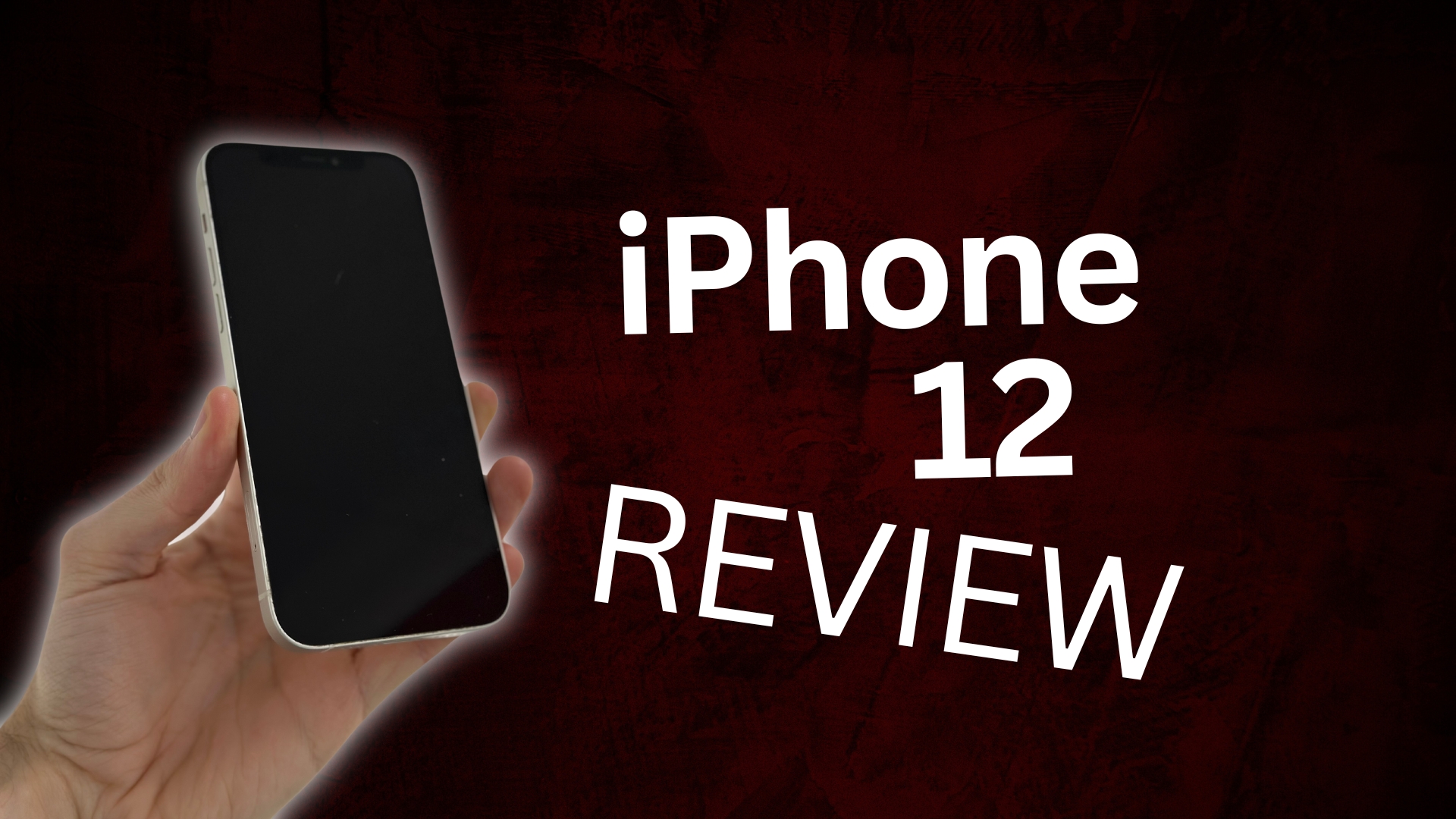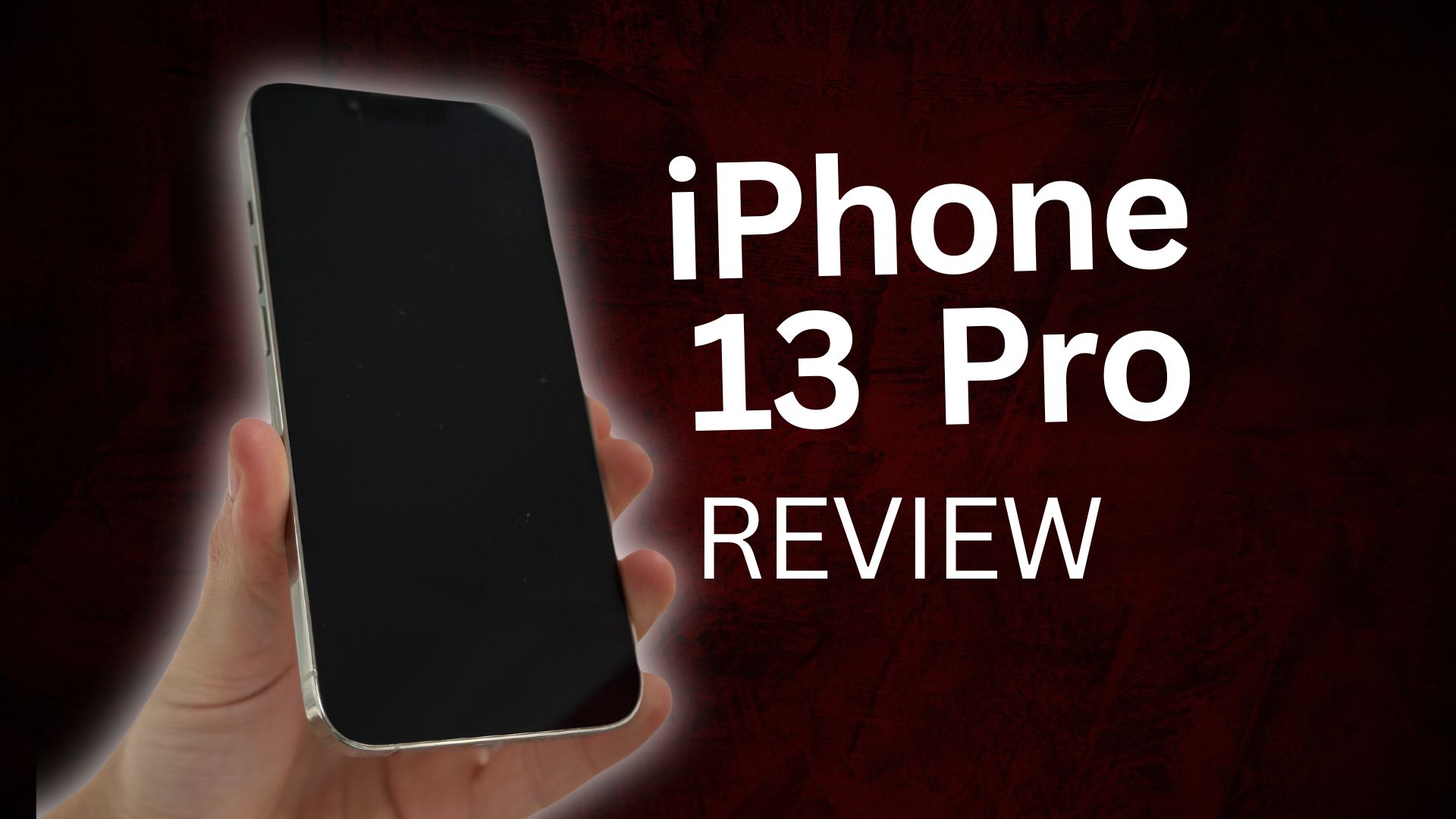Overview:
ToggleApple’s baseline model from 2022 strikes a perfect balance between future-proofing and price.
Should you buy an iPhone 14 in 2024? With the release of the iPhone 15, would you be better off going for an upgrade? Now that we’ve had a chance to test and compare both phones, we can give you a full run-down of what makes the iPhone 14 a perfect value-for-money pick.
When it comes to value, the longevity of your device really matters. You want to get as many years of use out of your device as possible. Or, if you’re eager to keep upgrading your phone year-on-year, you want a device that won’t lose its trade-in value too quickly.
iPhones are well trusted for keeping their resale value. Apple usually provides software updates for 6 years after launch, which keeps them valuable for several years. Apple also never sells their own devices at a discount, which could drive down the value. For the best value iPhone, you should aim for a cheaper refurbished device, released in the previous two years.
Pros ✅
Affordable flagship iPhone
Due to recieve iOS updates until 2028
All-day adaptive battery
 Cons
Cons
Average Camera (12 MP, no optical zoom)
More advanced phones are available
Large carbon footprint (unless bought refurbished)
Unique features
The iPhone 14 introduced crash detection and satellite SOS to the iPhone – which are two safety features that have actually saved lives in the real world. I can’t comment on these from first-hand experience (thank god!), but it’s nice to know those features are there.
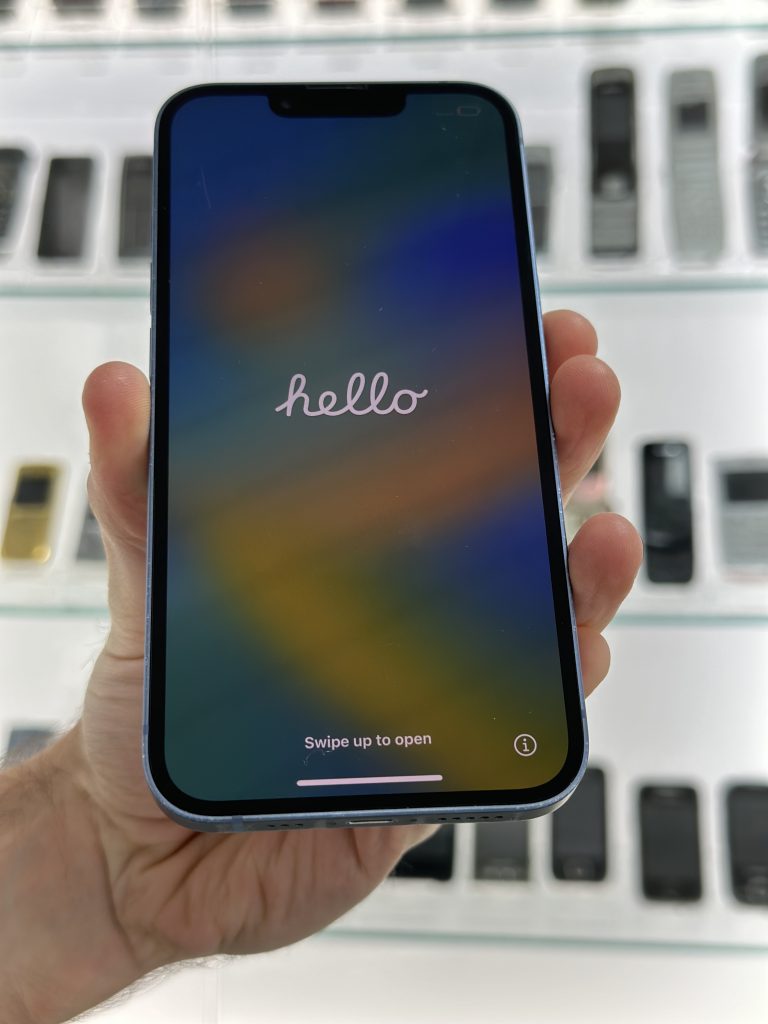
Design and Build
The iPhone isn’t just a piece of technology – it’s a fashion accessory, and one that has a fairly timeless design. The iPhone 14 looks very similar to the phones that come before and after it, with the most noticeable difference being the colours you can choose from – especially compared to the pastels of the iPhone 15. Personally, I’m a big fan of the iPhone 14’s general colour palate, although I do wish it came in green.
The phone is water and dust-proof (with the same IP68 rating as every other modern iPhone), although all flagship iPhones lose some durability points thanks to their rear glass panelling.

Price (vs. Storage Size)
This entry-level iPhone was launched in 2022 at a starting price of £699, although you could end up paying much more than that for increased storage. This follows Apple’s recent trend of each iPhone being more expensive than the last, rather than keeping prices steady and selling older models at a discount. The question of whether the upgrade is worth it largely depends on how much improvement that extra £100 buys you.
Here are the prices, next to storage size information:
| Model | Price (Brand New) | Price (Refurb) |
|---|---|---|
| iPhone 14 | £699 (128GB) | Very Good condition from £539* |
| £799 (256GB) | ||
| £999 (512GB) | ||
| iPhone 14 PLUS | £799 (128GB) | Very Good condition from £549* |
| £899 (256GB) | ||
| £1099 (512GB) | ||
| *prices available only while refurbished stock lasts | ||
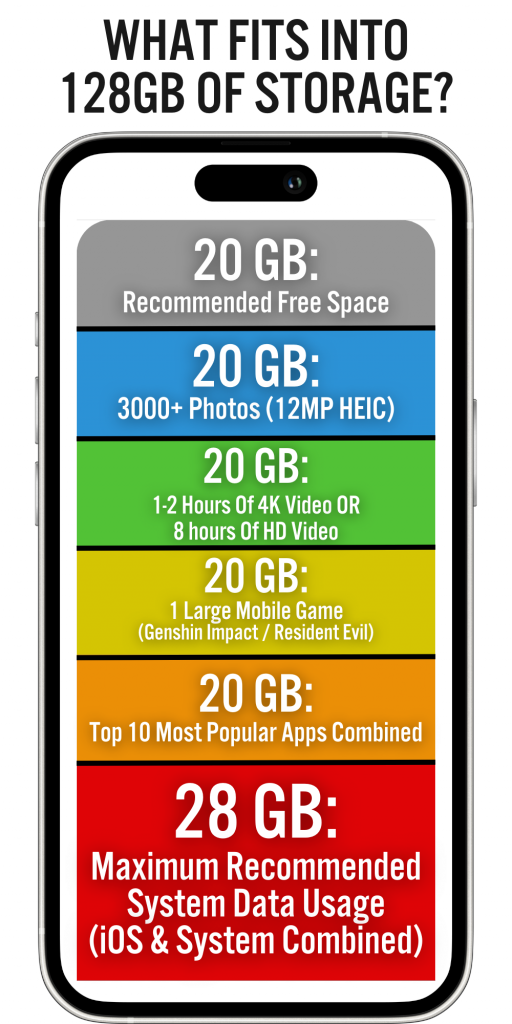
Is 128GB enough?
For most users, we think yes.
Once you take away the storage space you need to cover the bare minimum functions, you’re left with a comfortable 100GB. That’s enough for up to 30 hours of Full HD video, up to 22,000 photos, or 5 huge mobile games (we’re looking at you, Genshin Impact).
If you have a love for taking 4K videos with your iPhone, then you’ll only squeeze a few hours of footage onto your phone before needing to delete something, but serious camera lovers should consider a higher-spec iPhone anyway. Also, Apple offers affordable cloud storage options with iCloud+!
Did you know? Unlike many Android phones, iPhones don’t come with expandable storage – which means there is no option to add storage with a microSD card.
Processing Power: A15 Bionic

3.23 GHz
+
6GB RAM
The iPhone 14 uses the A15 Bionic processor – the same as the iPhone 13 Pro and Pro Max. This chip features AI processing, and has top speeds that rival most laptops! But what does all that power get you?
The truth is, unless you’re a pro gamer, you aren’t likely to notice any difference between the iPhone 14’s processor speed and basically any other recent iPhone. The phone also has 6GB of RAM, which is much more than enough for most users.
Finally, the iPhone 14 was launched with iOS 16. Assuming 5 years of software updates, and that you look after your phone perfectly, it could keep receiving updates, running smoothly and securely, until 2027.

Ben
Tech Expert
Attention Gamers!
For keen mobile gamers, or power users like me, we recommend the iPhone 15 Pro (or Pro Max). The A17 Pro chip in the iPhone 15 Pro even supports ray-traced graphics, and can play recent triple-A games!
All-Day Battery
The iPhone 14’s battery, when brand-spanking new out of the box, is advertised to last through up to 16 hours of constant YouTube videos.
To an Android user like me, these impressive battery life times feel like some kind of magic trick. The iPhone 14 has a smaller battery capacity than its main competitors, but still manages to outlast them in testing.Here’s how the iPhone 14’s battery stacks up against Apple’s other phones:
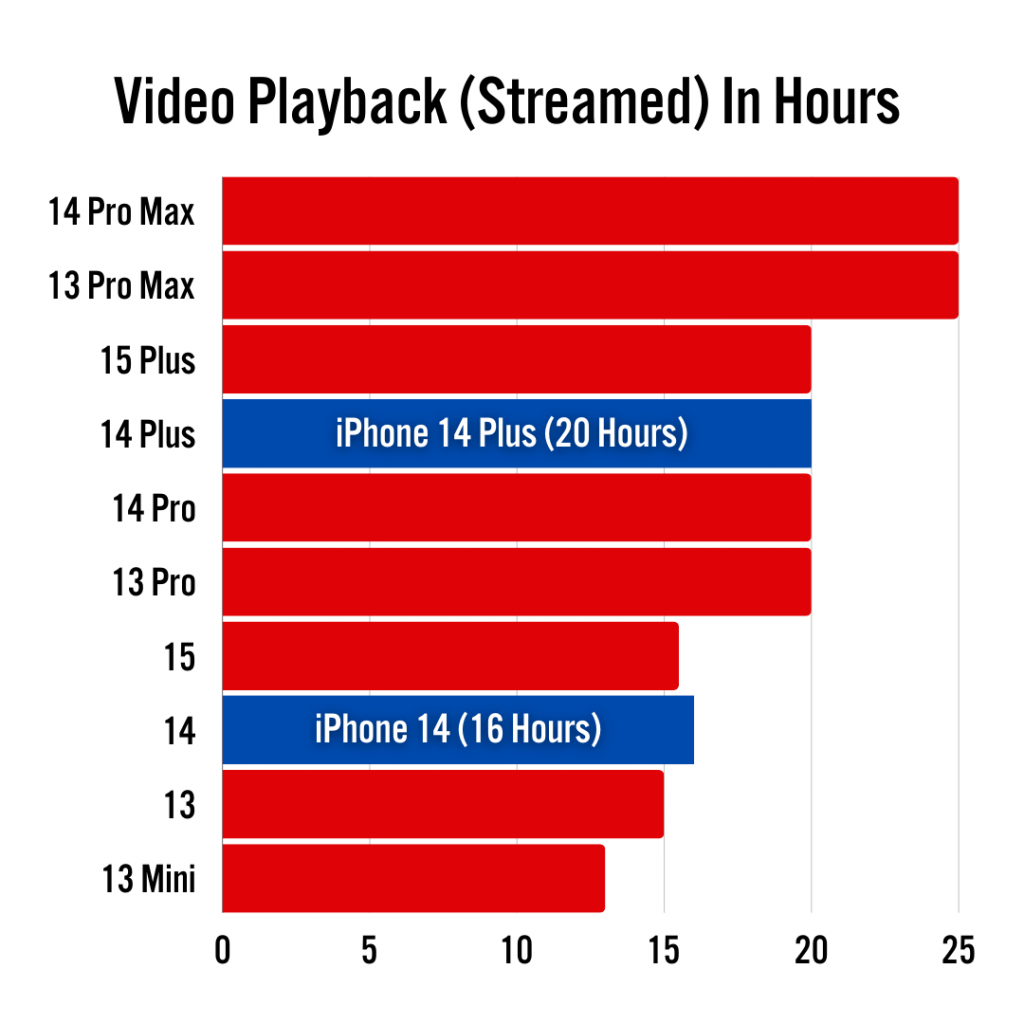
Fast Charging
The iPhone 14 supports Apple’s 20W Fast-charging standard, same as the iPhone 12 and 13. All you need is a 20W charger from Apple, which will get the iPhone 14 to 50% charge in only half an hour! You can manage without your phone for half an hour! … can’t you?
Wireless Charging
The iPhone 14 is compatible with all Qi-certified wireless chargers (that’s all modern wireless phone chargers).
Apple’s MagSafe chargers will snap to the back of a MagSafe iPhone case for optimal wireless charging.
Smart Battery Optimizations
Thanks to Apple’s closed ecosystem, iPhones are typically able to get more battery life out of a smaller sized battery (when compared to similar Android phones)
Battery health
After using a brand-new iPhone 14 for work, 5 days a week for 12 months, our tester has noticed that it’s sitting at 93% battery!
When you’re buying a refurbished phone, battery life can vary depending on the grade of the phone. At The Big Phone Store, our phones have a MINIMUM of 80% battery health* – enough for up to 12 hours of streaming video.
Camera
The iPhone 14 only has 2 rear-facing camera lenses: one wide, and one ultrawide. It doesn’t have the telephoto lens included on all of Apple’s Pro iPhones.
The iPhone 14 has the same 12-MP camera sensor found on the iPhone 13, but it introduces Apple’s Photonic Engine – an AI image processing system that boosts the quality of your photos. Meanwhile, the iPhone 14 Pro boasts a “48MP” quad-pixel camera – which still only produces 12MP images, but with more clarity.
iPhone 14 Camera Specs
Powered by: Photonic Engine (AI)
Main Lens (OIS, AF):
12MP, 26mm, ƒ/1.5
Wide Lens (120° FOV):
12MP, 13mm, ƒ/2.4
Selfie (TrueDepth):
12MP, ƒ/1.9
Display: Super Retina XDR
The iPhone 14 uses the same Super Retina XDR display as every other iPhone since the 11 Pro.
Super Retina XDR displays like the one on the iPhone 14 have a pixel density of about 460ppi (pixels per inch) – which for a phone held at a normal distance from your face, is a higher resolution than the human eye.
Here’s how far you need to zoom in before you can see the individual pixels on the screen:

Unlike the iPhone 11’s Liquid Retina screen, Super Retina is an LED display. LED displays (which include OLED and AMOLED) allow more contrast and brightness compared to LCD displays. Most flagship phones today use LED.
The screen refresh rate is 60hz, which might feel just ever so slightly less smooth than the 120hz display on the recent Pro iPhones (and slower than both the Galaxy S22 and Pixel 7), but you should of course remember that most videos are only 30hz or less!
Sustainability
Apple uses carbon offsetting to make their own operations 100% carbon-neutral, and have the ambitious goal of offsetting the total carbon footprint of all of their products by 2030.
With every new iPhone, Apple has increased the amount of recycled materials used in production and packaging. Some plastic is still used in the iPhone 14’s packaging.
A new iPhone 14 has an estimated carbon footprint between 61-91kg CO2e, which is less than the 14 Pro Max, but greater than both the iPhone 13 and iPhone 15. If sustainability is your most important feature, you’re best off with the more recent, cleaner, iPhone 15.
In normal use, the iPhone 14 is still more energy efficient than the competition. By using less power overall, it manages to last for longer on a single charge than similar Android phones that use a larger battery.

Steven
Sustainability Expert
“Apple’s commitment to carbon neutrality by 2030 looks achievable, but it doesn’t change the fact that buying a new phone always creates unnecessary emissions. The best way to avoid a large carbon footprint is always to buy a refurbished phone.”
How does the iPhone 14 compare to Android?
Let’s compare the best flagship models of 2022. The Samsung Galaxy S22 and the Google Pixel 7 are very similar devices to the iPhone, and most of the differences will be a question of taste – such as which display you prefer, or which phone’s photos you like better. The Photonic Engine in the iPhone 14 tends to add contrast to your selfies, which makes some pictures look more stylish, and others look unnecessarily dark.
In terms of design, all three phones have their own strengths. Both Android phones use a single punch-hole for the camera, in the centre of the notification area – where the iPhone 14 sticks to the wide notch design of previous iPhones. The S22 is noticeably slimmer, and so is the Pixel 7 (apart from the Pixel’s signature camera bar)
Here’s a quick side-by-side of the numbers:
Samsung Galaxy S22
Pros: 50MP primary camera, 3x zoom lens, better low-light photography, lighter, faster display
Cons: only 10MP selfie camera, £70 more expensive
iPhone 14
12MP main camera, 12MP selfie camera, Longer battery life
Works well with Apple ecosystem (AirDrop, AirTag, Apple Watch, FaceTime, App Store)
Google Pixel 7
Pros: 50MP primary camera, faster display, larger screen, £100 cheaper, works seamlessly with Google account
Cons: only 10MP selfie camera, heavier
The Boring Bits
Here’s a detailed specification of the iPhone 14 and 14 Plus:
| iPhone 14 | iPhone 14 Plus | |
| Released | September 2022 | |
| Connections | ||
| 5G | ||
| 5Ghz Wi-Fi | ||
| Bluetooth 5.3 | ||
| Battery | ||
| Battery Capacity | 3279mAh | 4325mAh |
| 20W Fast Charging | ||
| Wireless Charging | ||
| Security | ||
| FaceID | ||
| TouchID | ||
| Secure Enclave | ||
| Camera | ||
| Photonic Engine | ||
| Rear Lenses | 2 | |
| Wide Lens | ||
| Ultrawide lens | ||
| Telephoto Lens | ||
| Optical Zoom | ||
| Camera resolution | 4032×3024 (12 MP) | |
| Display | ||
| Size (Diagonal) | 6.1 inches | 6.7 inches |
| Screen Resolution | 2532×1170 | 2778×1284 |
| Pixels per inch | 460 | 458 |
| Display Type | Super Retina XDR | |
| Display Shape | Notch | |
| Peak brightness (nits) | 1200 | |
| Processor | ||
| Chip | A15 Bionic | |
| CPU Cores | 6 | |
| Speed | 3.23GHz | |
| GPU Cores | 5 | |
| Ray Tracing | ||
| Neural Cores (AI) | 16 | |
| RAM | 6 GB | |
| Max Storage | 512 GB | |
| Design | ||
| Connector | Lightning | |
| USB Speed | USB-2.0 | |
| IP68? | ||
| 3.5mm jack | ||
*Excluding Fair phones
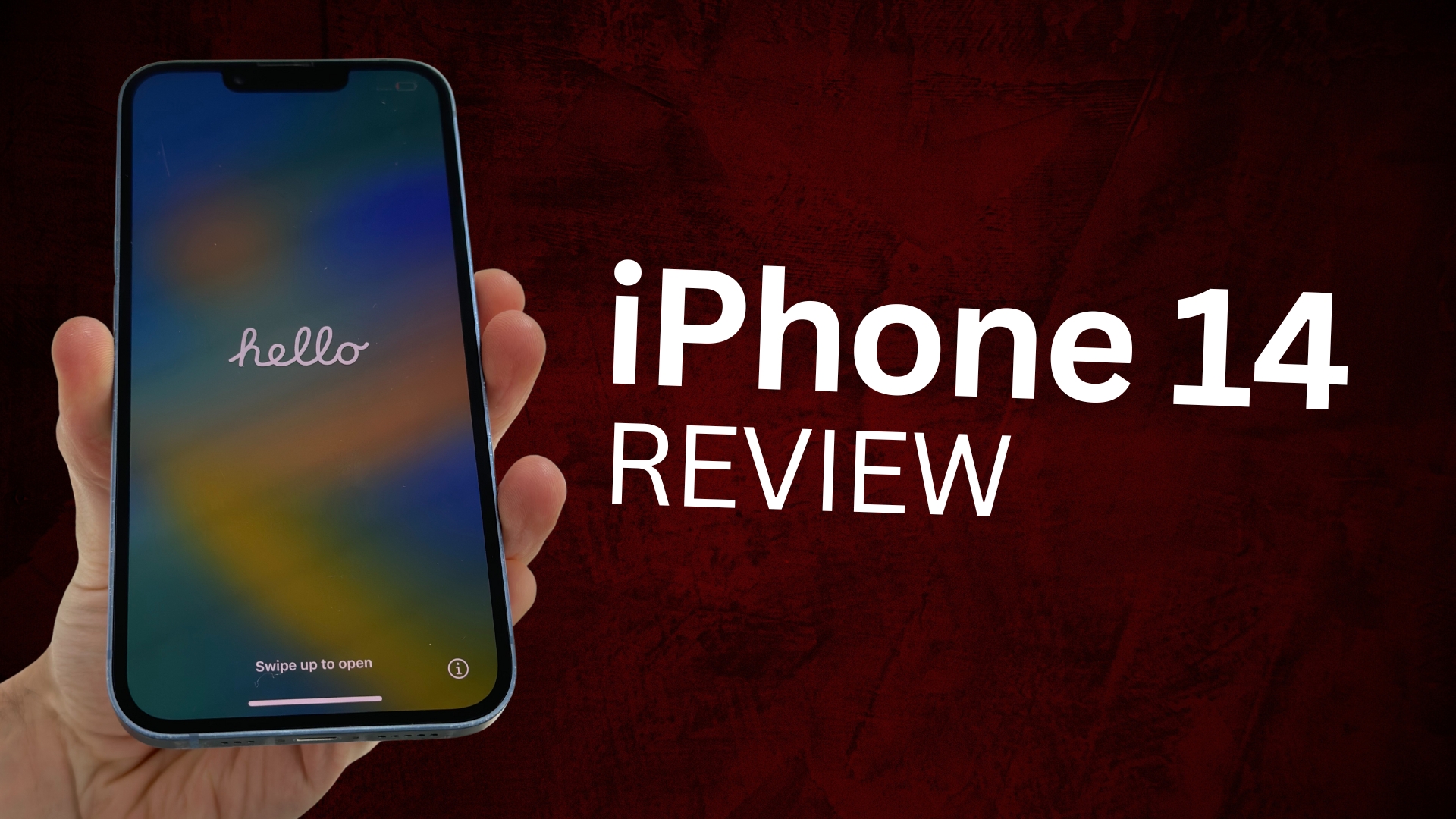
 Cons
Cons

